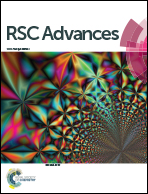Morphological evolution and toughening mechanism of polypropylene and polypropylene/poly(ethylene-co-octene) alternating multilayered materials with enhanced low-temperature toughness
Abstract
In this paper, polypropylene (PP) and polypropylene/poly(ethylene-co-octene) blends (PP/POE) were fabricated into alternating multilayered materials to improve the low-temperature toughness of PP efficiently compared with conventional PP/POE blends. POM, SEM, micro-FTIR and part-impact test were performed to characterize and investigate the alternating multilayered microstructure and its relationship with mechanical properties. The results showed that the unique alternating multilayered microstructure could generate a distinctive distribution of POE, resulting in the great change in both macro- and micro-morphology of the materials. Most interestingly, the morphological evolution of the dispersed POE phase before and after the impact showed that a brittle–ductile transition (BDT) layer was formed at the interlayer interface between the adjacent PP layer and the PP/POE layer during the impact process, which was the main reason for the great improvement of the low-temperature toughness. Moreover, the rigidity of alternating multilayered materials was maintained very well because of the existence of the rigid PP layer, indicating that the alternating multilayered microstructure was very helpful to maintain a good balance between toughness and rigidity.


 Please wait while we load your content...
Please wait while we load your content...